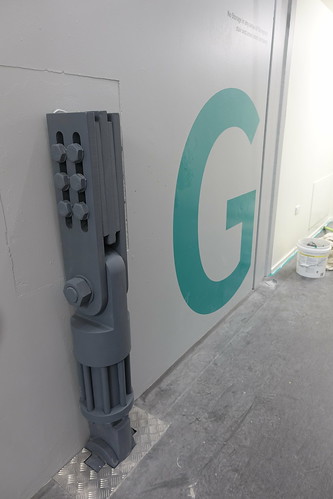Lewis Bradford Consulting Engineers Ltd were the structural engineering firm on the Tūranga project. The structure consists of large post-tensioned concrete walls with viscous dampers to provide a low damage structural system along with a steel moment resisting frame structure to the perimeter.
Lewis Bradford Consulting Engineers was instrumental in developing a structure that could withstand future potential earthquakes of the magnitude that destroyed many Christchurch buildings in 2011. Tūranga was constructed to very stringent performance criteria, and is designed to sustain minimal structural damage during a large earthquake thanks to an integrated, self-centering mechanism that allows the building to sway and then return to its original position.
Part of the innovative set up is a seismic force-resisting system made up of a series of large-scale concrete walls that can rock and shift to isolate the building from peak earthquake accelerations during a significant seismic event. Each wall has high tensile, pre-tensioned steel cables that clamp the wall to the foundations with approximately 1,000 tonnes of force per wall.
The structural engineering and design used in Tūranga has won a number of awards.
- Find out more about the structural engineering on Schmidt Hammer Lassen Architects page about Tūranga
- View Lewis Bradford Consulting Engineers Ltd information on the low damage features of Tūranga [PDF]
- Watch timelapse video of Tūranga under construction
More about the extrusion dampers in Tūranga
Innovative engineering that will minimise damage during a large earthquake has been used in Tūranga. This low-damage structural engineering design, developed by University of Canterbury Associate Professor Geoffrey Rodgers, uses “dampers” to both absorb energy in a big earthquake and prevent building damage.
Tūranga has large extrusion dampers, bolted at key points between the base walls and the foundation to act as motion restraints during an earthquake. Twenty of these one metre-long dampers – each weighing 185 kilograms – have been used.
“Under a low level of shaking, this building will respond just like a fixed base structure,” Associate Professor Rodgers says. “Once you get beyond that low level of shaking, it has been designed to roll and move at the base, but in a controlled way.”
- Read more: UC Engineering innovation boosts new city library's quake resilience, University of Canterbury, 28 August 2018

